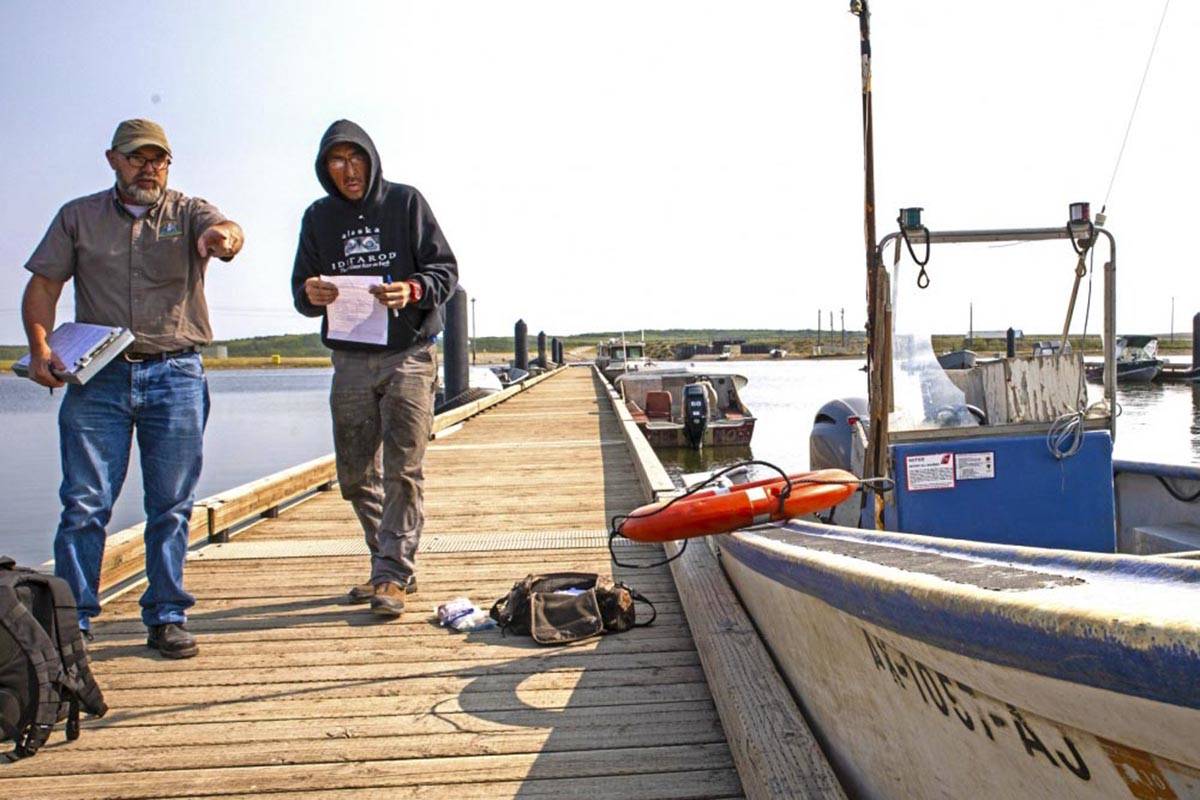A yearlong Coast Guard mission to extend inspections to more than 300 bulk oil facilities in Alaska was only viable due to hard work and support from across the country, a press release said.
The Marine Safety Task Force, headquartered in Coast Guard Sector Anchorage, was launched this spring, according to Petty Officer 1st Class Nate Littlejohn. The MSTF was tasked with inspecting 380 bulk oil waterfront facilities, 346 of which are not connected to the road system.
“In the lower 48, Coast Guard inspectors can simply drive to fuel storage facilities to conduct inspections,” said Capt. Sean MacKenzie, sector commander, in the press release. “Up here in Alaska, getting our folks to these places requires flying and often demands expensive lodging. Working with budget and personnel limitations during the Coast Guard’s busiest time of year are just a few of the challenges we overcame this year.”
The inspections were deemed necessary as harsh environmental conditions degraded the safety and integrity of the facilities and increased the chance of an oil spill. The facilities are crucial for providing oil to keep homes warm in winter.
“Remote oil pollution incidents are significantly higher in cost due to the resources needed for clean up,” MacKenzie said. “Inspectors had all these risks in mind when communicating to facility owners and operators about the cost of infrastructure upkeep and oil spill prevention versus the liability for clean-up costs associated with an oil spill.”
Transport and logistics to the widely scattered and largely inaccessible communities of rural Alaska was often the trickiest part of the operation. Finding the funding to get there and stay there, often for days at a time, was a severe constraint, MacKenzie said. Finding the bodies to perform the inspections was also difficult, pulling in active duty and reserve members from across Alaska and even the Lower 48 to fill out the inspection teams.
Civil Air Patrol provided extensive support, added Lt. Cmdr. Jereme Altendorf.
“Due to the constraints and cost of flying commercially, CAP pilots greatly enhanced our ability to execute missions in the Arctic and Western Alaska in 2019,” Altendorf said in a release. “The success of the MSTF initiative this summer was contingent upon the willingness of CAP leadership to support us, and the volunteer pilots who flew countless hours in support of our missions this summer.”
Across the state, MSTF personnel inspected five times as many oil facilities as last year, reaching 236 out of 380 of the target facilities. Coast Guardsmen on the ground in those communities were also able to inspect fishing vessels, perform hazmat container inspections and advise residents on how best to fix deficiencies going forward.
“2019 was a success for the MSTF initiative,” Altendorf said. “But this summer was also an educational experience for everyone involved. We learned a lot about what worked, what didn’t, and what we know we can improve upon. We’re in the process of planning for 2020 with the goal of completing the inspections we were not able to get to this year.”
• Contact reporter Michael S. Lockett at 757-621-1197 or mlockett@juneauempire.com.

